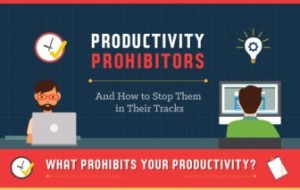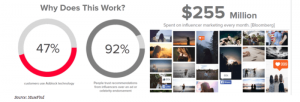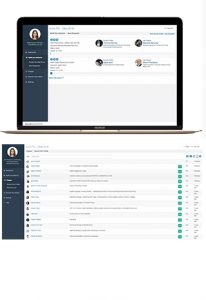Leaders have been incorporating different talent development methods to further develop the skills and competencies of their employees. With millennials and gen Z talents entering the workforce, organizations will continue to focus on talent development trends not just for employee development, but also for the purpose of employee engagement.
Many studies show the importance of growth and development opportunities for millennial employees. That being said, here are 5 talent development trends that your organization must be aware of in order to create stronger employee engagement and productivity.

Free-Photos / Pixabay
1. Incorporate Both Experiential and Immersive Learning
Many organizations incorporated experiential learning tactics such as internships. Experiential learning has been successful in skills development. But learning new skills is not as powerful if employees cannot act on those skills.
That is where immersive learning comes in. It is about creating a close-to-reality environment for a better understanding of the learners. Immersive learning focuses on action and changing the current behavior. As well, creating a close-to-reality environment can help remote employees to bridge the gap between how to execute tasks in-person compared to a remote situation.
Virtual reality and gamification are two major examples of immersive learning. Use computer technology to create a virtual environment. Introduce new ideas and techniques. Get the learners to practice those techniques in a virtual environment. This can be particularly effective for jobs that need the use of machinery.
2. Implement Well-Being Programs For New Era Of Working
More than ever, mental health is a huge concern for many organizations. Belinda Jane Dolan, the CEO of the Clariti Group, indicates the rise of well-being programs for a new era of working as a major talent development trend.
“Studies are increasingly indicating that workers are wanting to work for companies that place an emphasis on workplace well-being and building a psychologically safe workplace,” Dolan explains, “2020 has proven to be a pivotal point for many to check their values, what is important to them. Workers are choosing their health and their families”.
Many organizations are incorporating workplace wellness benefits plan as a part of their compensation. Whether it is a simple stipend or a full wellness program at an organization, the benefits vary. But the focus is on encouraging employees to have open conversations about it.
Dolan gives examples of different benefits based on regions, “U.S companies are leading the way in allowances work for home furniture. Companies across Asia and Australia are providing subsidies for a local gym membership, proving fitness devices such as whoops or watches”.

Lazare / Pixabay
3. Allow Employees to Create Their Own Development Plan
With major changes around workplace demographic and working arrangements, younger employees are making more proactive efforts in planning for their careers. Professional development is one of the areas that show these changes.
Andy Storch, host of the Talent Development Think Tank Community, has noticed this trend among attendees of his conference. He mentions how millennial employees are starting to take charge of their own careers and the organizations’ stance about it.
“Millennials want to take charge of their own career. Organization leaders want to support that,” Storch explains. “the last thing you want to do is have your younger employees sit around waiting for your approval. That will be very frustrating for your employees. If your younger employees are frustrated, they’re going to jump ship”.
Allow your employees to take charge of creating their own individual development plan (IDP) as well as a personal development plan. Help them craft clear targets and goals.
Storch also adds, “the key isn’t to give them all the steps. Coach them to help them figure out the steps themselves. The more ownership that they can take in driving this development conversation, the more engaged they will be towards their roles. This will also help them to become more successful in their role. It’s a win-win”.
4. Developing Emotional Intelligence
Hard skills can be developed through repetition. Soft skills can be much tough to develop. So how can leaders help their employees navigate through not only changes in the workplace, but also on human connection?
Miha Matilevski, Founder of Fail Coach, points to emotional intelligence as a solution, “employees don’t make decisions like robots. They’re humans! Emotions such as fear of failure or a lack of clarity do not always contribute to the best decisions. That’s why companies focus on emotional intelligence. They want employees to be aware of how emotions can affect their productivity and well-being”.
Whether through career development workshops, mental well-being programs or even training focused on emotional intelligence, emotional intelligence is starting to become a recurring theme in talent development.

OpenClipart-Vectors / Pixabay
5. Redefining Leaders’ Responsibilities
Employees are taking more ownership of their careers. Technologies are replacing tasks that used to be only done by humans and are even making decisions on behalf of humans. Though leaders are still responsible for meeting shareholder values and making great decisions, people management responsibilities are increasing.
Annabelle Beckwith, the author of “Get Your Peas Back In The Row”, started to notice changes in leaders’ responsibilities 20 years ago. The decision-making and meeting shareholder values have always been there. But she mentions changes in what is expected from leaders.
“Increasing number of companies are starting to put emphasis on culture as much as they do for the traditional responsibilities of leaders,” Beckwith remarks, “leadership roles are being redefined towards the balance of employee engagement, customer satisfaction, and task completion”.
This shift brings more attention to the strategic thinking side of talent development, more than skills. Beckwith also points out the mindset shift, “even a fairly junior leaders are being encouraged to understand overall strategy before specific tasks of the team. How consumer trends have shifted towards balance and connection is now affecting talent development strategies too. It’s interesting”.
Business & Finance Articles on Business 2 Community
(60)








